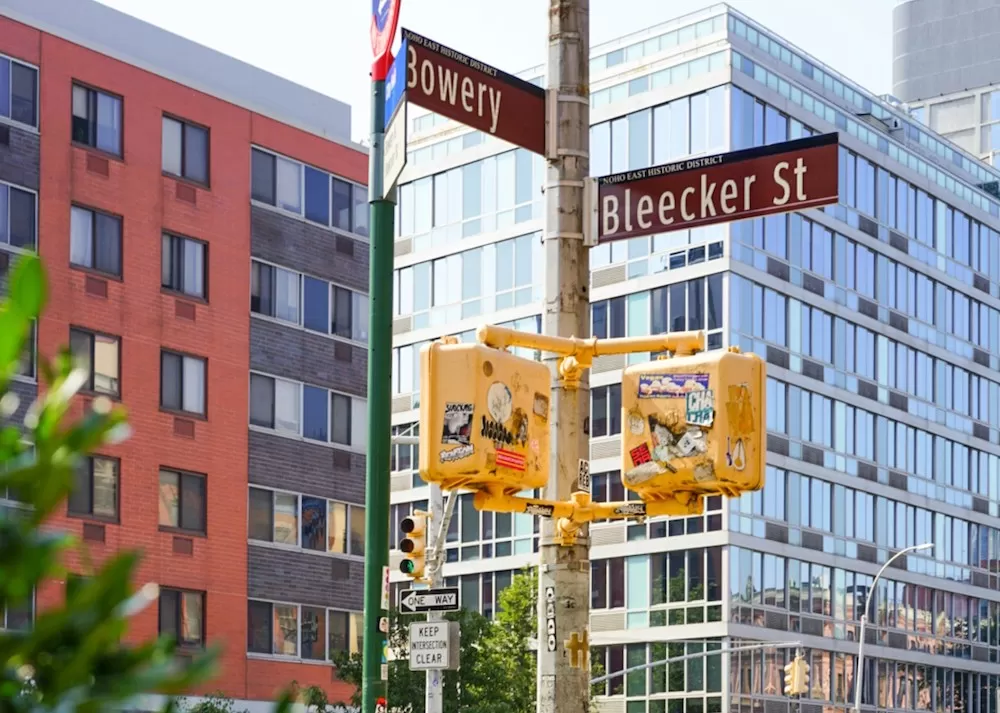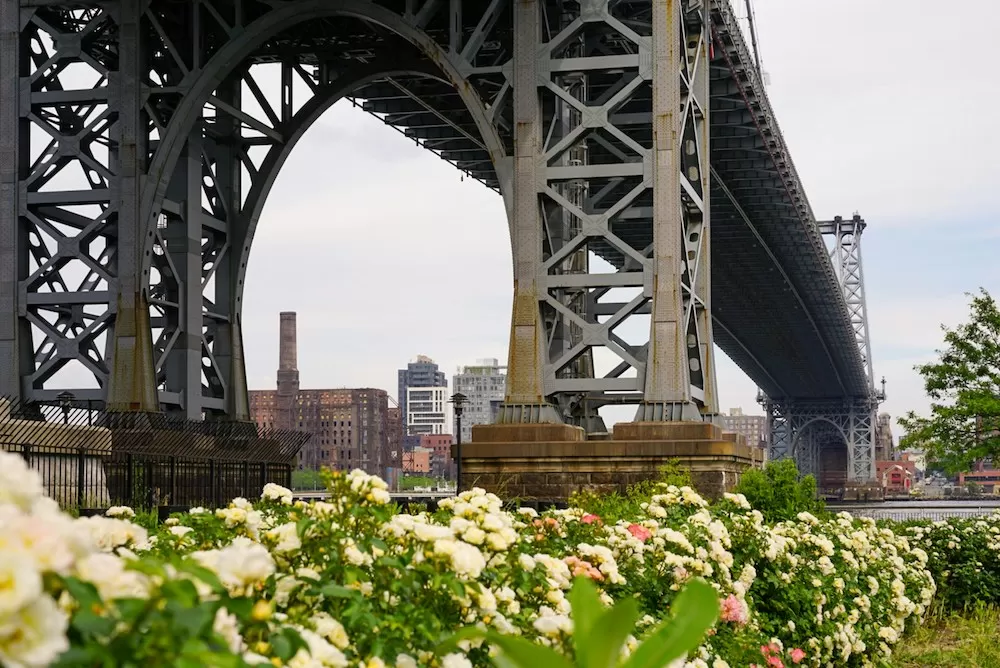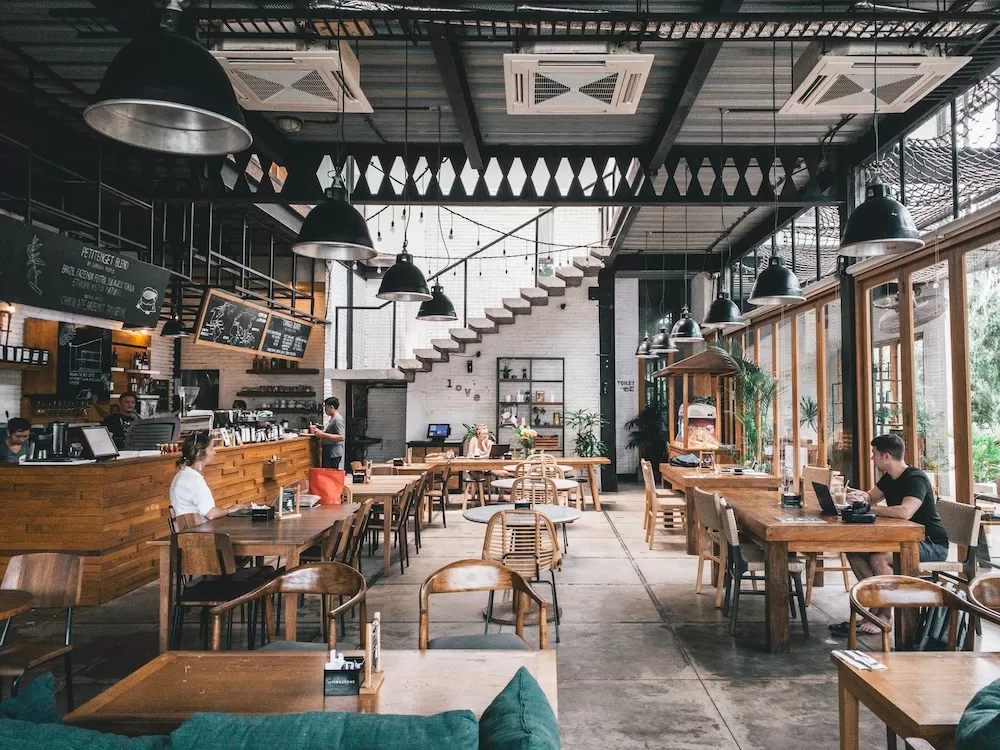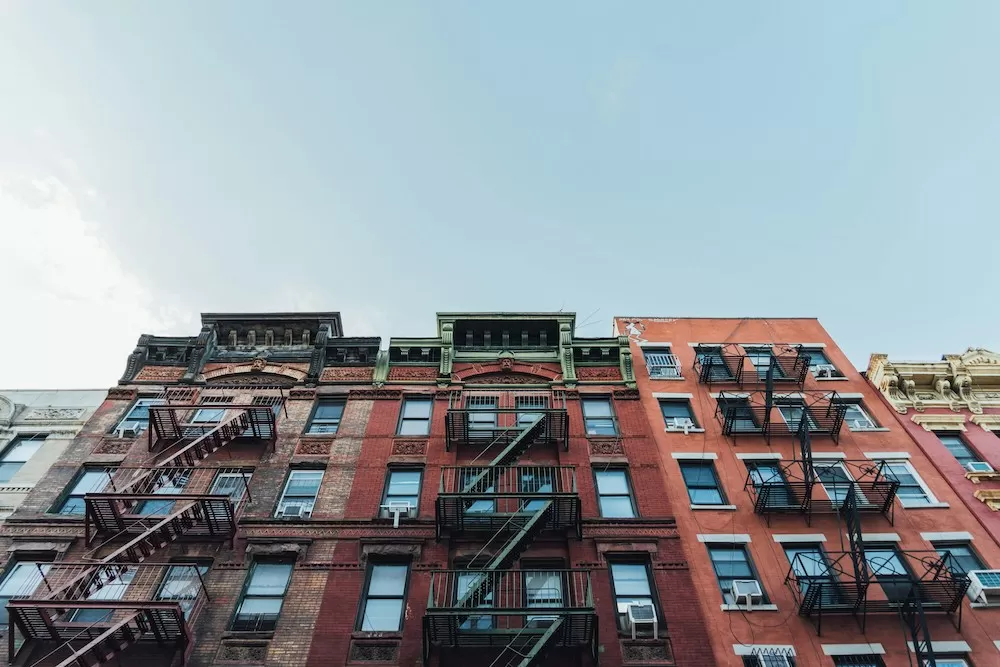More than any other neighborhood, the Bowery conveys the ever-evolving history of
New York City. The area began as an immigrant haven, the go-to destination for various international communities to settle in the big city. Around the 19th century, the district burst with vibrancy, thanks in large part to the numerous clubs, cabarets, theaters, and other establishments that transformed it into a popular entertainment hub of the time. And now, its gritty appeal speaks to its dwindling influence, often forgotten against the more popular areas that surround it. Despite all that, the Bowery is still among the most fascinating parts of New York City.
Where is Bowery in New York City?
The Bowery joins a small but notable list of
New York neighborhoods named after major streets and thoroughfares. The Bowery itself is a prominent street in Lower Manhattan, running through Chatham Square to Cooper Square. Naturally, the neighborhood surrounding it shares its name, spanning from E 4th Street to Canal Street. Though it's a fairly small district, its very central location draws locals and tourists alike, especially since popular neighborhoods like Little Italy, the East Village, the Lower East Side, and Chinatown border the area. Who wouldn't want to stay in such a convenient place?
Is it Safe in Bowery, New York City?
Regardless of its gritty past, the Bowery now stands as a generally safe neighborhood in New York City. Even when
New York City's crime rates skew high, you won't necessarily feel it here, not to mention its neighboring districts, too. The Bowery and many of the popular areas that surround it stand out as notably safe. Petty crimes may still pose a problem here, but they're not so rampant that they're a major concern. So as long as you take the necessary precautions when you go out, especially at night, you'll be safe!
What's The Vibe in Bowery, New York City?
The Bowery is eclectic, vibrant, historic, and sprinkled with a little bit of grittiness. For one thing, the area once housed immigrant communities, filling up the space with their unique cultures, culinary influences, and more. You can still tell how diverse the neighborhood is and was with how two of its neighboring areas, Little Italy and Chinatown, are notable enclaves of distinct international communities in New York. But while those other districts have made a name for themselves as foodie havens in the city, the Bowery retained its cool, underground appeal with an electric nightlife scene.
Is it Expensive in Bowery, New York City?
Don't let the Bowery's slight grittiness fool you! The area is still fairly expensive in the grand scheme of things. Is it the priciest part of town? No, it's not. Nevertheless, the neighborhood will still let you feel the notoriously high
living costs in New York City! Take the average rent here, for instance, which is at a median of about $4,104.00 per month. That alone makes the Bowery more expensive than most of Brooklyn and Queens. If you eat out here, too, that'll cost you around $30.00 to $60.00 per mid-range meal. By comparison, it's fairly easy to get an affordable $10.00 to $25.00 meal in other parts of Manhattan.
What to See in Bowery, New York City
Despite its very central location, the Bowery doesn't boast that many notable sights to see. Perhaps the most popular is a view of the Williamsburg Bridge from various parts of the neighborhood. Some streets within the Bowery give you such a majestic view of the steel bridge that they've become popular selfie spots in the area. There's also the Bowery Ballroom, a prominent live music venue in the district that has featured countless iconic performances. Those into contemporary art will want to check out the New Museum at 235 Bowery instead. Its treasure trove of modern artworks is a nice contrast to the classic pieces other
New York Museums famously display.
What to Do in Bowery, New York City
If you just want to hang out and have fun in New York City, go to the Bowery! Its scarcity of iconic landmarks keeps the tourists away, while its fabulous array of culinary and nightlife hotspots makes it the go-to district for going out at night. Want live entertainment? Check out the iconic Bowery Ballroom for some excellent live music! If you're lucky, your favorite band or artists might just be performing there tonight! The famous Bowery Street is also lined with countless bars and clubs, each more exciting than the next. Notable spots include The Bowery Rooftop, the Bowery Beer Garden, 310 Bowery Bar, Phebe's, Cooper & Oak, and Crown.
The Best Restaurants in Bowery, New York City
Now, let's talk about the best restaurants in the Bowery, which is a lot! Its eponymous street alone has the likes of The Wren, Gemma, Duane Park, Jiang Nan NYC, and Bar Primi Bowery, to name a few. These are the types of upscale eateries where you'll find true-blue New York cosmopolitans dining in and indulging in their quality cuisines. But even beyond Bowery Street, the neighborhood boasts a multitude of cool diners, chic bistros, and even a few
Michelin-starred restaurants in New York City. What's not to love?
Don’t miss any of the Bowery’s amazing hotspots listed below:
- Duane Park at 308 Bowery
- Bar Primi Bowery at 325 Bowery
- Gemma at 335 Bowery
- The Wren at 344 Bowery
- Jiang Nan NYC at 103 Bowery
- Bowery Meat Company on E 1st Street
- Potluck Club on Chrystle Street
- Freemans on Freemans Alley
- Torrici on Mulberry Street
- Dudleys on Orchard Street
What to Know About Renting in Bowery, New York City
As already mentioned, the rent in the Bowery is fairly high. The average rent here is about $4,104.00 per month, and that doesn't even guarantee a spacious
luxury apartment in New York City! The studios in the district already cost as high as $3,725.00 per month, and many are possibly smaller than 25 square meters! If you want a big place that fits about four bedrooms, however, expect to pay as much as $9,200.00 per month! How's that for expensive? Such prices practically mirror those in places like SoHo, Chelsea, and even Park Avenue!
The Bowery stands as proof that New York City is an ever-changing and continuously evolving metropolis. This relatively small neighborhood has embodied every transformation the Big Apple has gone through over the years.




